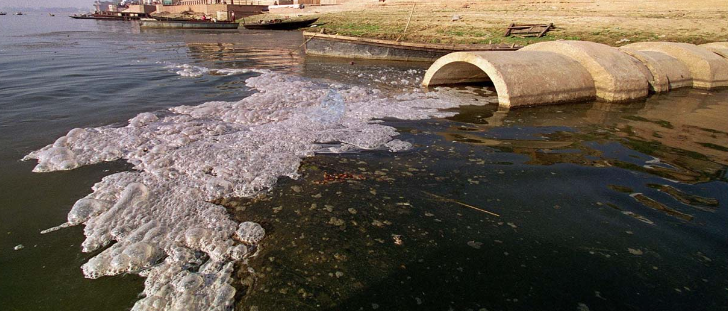Water is recognized as a human right that “entitles everyone
to sufficient, safe, acceptable, physically accessible and affordable water for
personal and domestic uses”.
Water is an essential component to ensure equitable, sustainable and productive rural economies. It is required for guaranteeing food security, health and personal hygiene, as well as for agricultural production
and energy supply, among others. Sustainable water management, sufficient water infrastructure and access to a safe, reliable and affordable supply of water and adequate sanitation services are key to improving rural livelihoods, expanding local economies, creating decent jobs in rural areas and across economic sectors, and maintaining a healthy and productive workforce. A failure to address issues related to water runs the risk of having negative repercussions on rural economies, livelihoods and decent work.
In rural areas, public water provision and sanitation services, as well as water infrastructures such as water collection points, pit latrines and septic tanks, are often inadequately maintained and in poor shape. In addition to this lack of services, natural water sources such as wells, pumps, and rivers are often contaminated and provide an unreliable supply. As water technologies are often designed for urban contexts, they may not take into account the specificities of rural areas in terms of energy efficiency, the use of natural treatment systems, and cultural appropriateness.
Groundwater is, by far, the most practicable choice for safe
water supply. There is a wide range of low-cost groundwater extraction
techniques available. In areas where groundwater is not available in adequate
quantities, the next best available option for water supply is from surface
water sources.
However, surface water sources are more contaminated than
groundwater, which necessitates treatment of water and hence increases the
costs of water supply projects. There are simple treatment methods available to
provide minimal levels of treatment to produce safe water free of microbial
contamination. Depending on the quality of raw water, a treatment method can be
selected from a limited choice of low-cost treatment methods to achieve better
water quality.
Distribution of water from a central source to the community
is also an important aspect of water supply. For rural communities,
distribution can be done through stand posts and yard tap connections via a
branched network of pipes.
- Safe and reliable supply of water is therefore essential for individual welfare and for community development. The first and foremost consequence of lack of safe water for community consumption is diseases. Infectious diseases, affected by the availability or the lack of protected water supply systems, may take the following forms:
- World Health Organization (WHO) estimates that as much as 80% of all diseases in the world is associated with water. Available evidences indicate that most of the health benefits from safe water are attainable at service levels of 30–40 liters per capita per day. Hence, the role of organized water supply in the prevention of water-borne diseases and in the promotion of public health can be well appreciated. It has been established that this role is best fulfilled when every house in a given community is connected to the public water supply system. But for most developing countries, this ideal is still unattainable due to financial and other constraints. According to the Human
Development Report of United Nations Development Programme (UNDP), as of 1996, more than 31% of the population in developing countries are yet to have access to safe water and more than three-fourths of this population lives in the rural areas.
Traditionally, the people in rural areas have obtained water from unprotected ponds or tanks, wells, cisterns and sometimes streams and rivers. These water sources are frequented daily for collecting drinking and cooking water, washing clothes, bathing, livestock washing, etc. Mostly, these waters are unsafe for consumption due to contamination by fecal matters as well as by their heavy use. Consequently, the populations suffer from frequent epidemics.
Considering the present situation of rural communities, where water from polluted sources is carried over long distances and used directly, any simple improvement in service and water quality could be expected to have a large beneficial impact on health. That is to say that what is needed is an effective short-term alternative to the ideal situation. Such an alternative to achieve an overall low-cost water supply scheme consists of:

